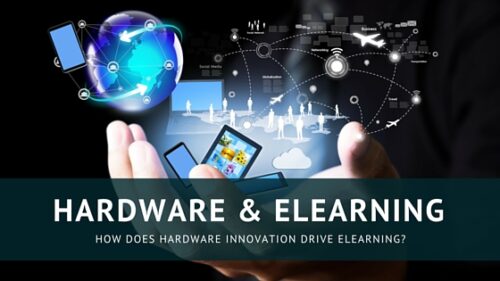How Does Hardware Drive the eLearning Industry?
The annual Consumer Electronics Show (#CES2016) is happening in Las Vegas all week. It’s one of the largest events in North America showcasing the latest in tech gadgetry from all industries. The eLearning community doesn’t normally bother with hardware innovations because hardware products are mostly directed towards consumers of non-educational products. However, as Trish Uhl pointed out during my Periscope broadcast, it’s the hardware that is driving consumer behaviors which in turn influences how consumers interact with content. This is a brilliant insight as it puts hardware directly at the front of how we plan for the future of corporate training.
What Happens to eLearning When Screens Disappear?
For many years it’s been a race for bigger, cheaper, and more realistic television sets. And now it feels like we’ve entered into a race to eliminate not just the television, but all screens or monitors. That may be unrealistic to think that we will never again need screens. But is it?
What if the screen as we know it is replaced by headsets, or holograms? The viewing of entertainment is largely responsible for our “need” for television screens. What if the future of entertainment doesn’t require a screen? And for those few who still watch television news for staying updated on current events…well, we already know information can be acquired faster via other channels of information. What might that look like? Or in this case, what will it not look like?
Think of the Amazon Echo, or Siri, or other voice activated devices. These are becoming more powerful with every new update. All via voice commands, we can get all the information we need without a screen.
“Hey Alexa, tell me about the latest news in my area.”
This may not be widely used, yet. But they show us what learning might look like in the future. Alexa could be quizzing you on the content of your current courses at exactly the right moment in time maximizing the brain’s capacity to learn. I know it seems a bit like a science fiction novel, but the possibilities are quite real. And it all starts with the hardware.
How are User Interfaces Changing eLearning?
Physical technology innovations also impact the user experience. Software has moved to the cloud, but content in the cloud needs a place to go for it to be useful. What we now call the internet of things is the channel for both sending and receiving that cloud data. It’s these hardware “things” that become the conduit between the cloud and us. It makes sense that how we engage with these things will also quickly morph from keyboard and mouse to something far more intuitive.
It may be that voice activation is the most obvious future user interface with technology. Or maybe there’s more too it than that. Our hands/fingers have been the primary tools manipulating keyboard and mouse to interact via onscreen interfaces. However, the rest of our body parts serve important functions as well. Our bodies currently send data through simple monitoring wristbands. But our wrists currently don’t receive data and react accordingly. An argument could be made that we choose reactions based on the information we see displayed on our wrist devices. But I’m thinking we may be headed towards something more interesting.
Last week I highlighted a company that has created an interactive suit called the Teslasuit. This is an interesting look at what’s possible when we include the entire human body in the interface experience. This type of wearable may not have immediate daily uses for the purposes of training. But they are already in use training military personnel in highly advanced training simulations. As the technology gets cheaper we will create effective commercial uses that begin to make more sense.
While most of our industry’s technology innovations are software based, it’s becoming more important than ever to watch the trends in hardware. The eLearning industry follows cultural shifts in how technology is being used. The internet of things is forcing the eLearning industry to take a closer look at new hardware driving the expectations of our learners. We can’t expect that the cartoonish click-the-next-button training content will always be the norm. And while we all attempt to move beyond that in our designs, I am beginning to see the technology hardware and cloud software making many of these decisions for us.
If you’re interested in seeing more you can always follow #CES2016. But if you’re interested in anything specific, let us know @Litmos and I’ll find the information for you while I’m there. Also, if you are attending, please feel free to reach out and perhaps we can meet up.





